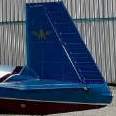Jacks are Done - Fun Project!
-
Members Online
- LOCOLJ
- Andy95W
- fastandfar
- Wingover
- Ricky_231
- Greg Ellis
- Skyland
- 201er
- Tmack201
- 7.Mooney.Driver.0
- Sue Bon
- Igor_U
- 1980Mooney
- EricJ
- hammdo
- 802flyer
- eman1200
- donkaye
- wombat
- kortopates
- Planter
- DCarlton
- Zulee
- SKI
- Hank
- Kelingreen
- Kerrville
- toto
- Utah20Gflyer
- Ivan
- crustymuffin
- AndreiC
- Jim F
- slowflyin
- Meshach
- 231DF
- Adam Belle
- Pinecone
- Sabremech
- mooniac58
- IvanP
- Nico1
- bigmo
- M20F
- Ragsf15e


Recommended Posts
Join the conversation
You can post now and register later. If you have an account, sign in now to post with your account.